For Japanese learners, The Japanese particles are one of the main sources of concern. Today I will talk about “と (to)”. “と (to)” is not simply translated as “and. If you are confused, please refer to the table of contents to find the “と(to)” you are looking for. I will explain the correct usage of “と(to)” as well as its other roles. For a more comprehensive overview of the Japanese particles, please click here.
Table of contents
Noun + と(to) + Noun
: Complete listing of elements
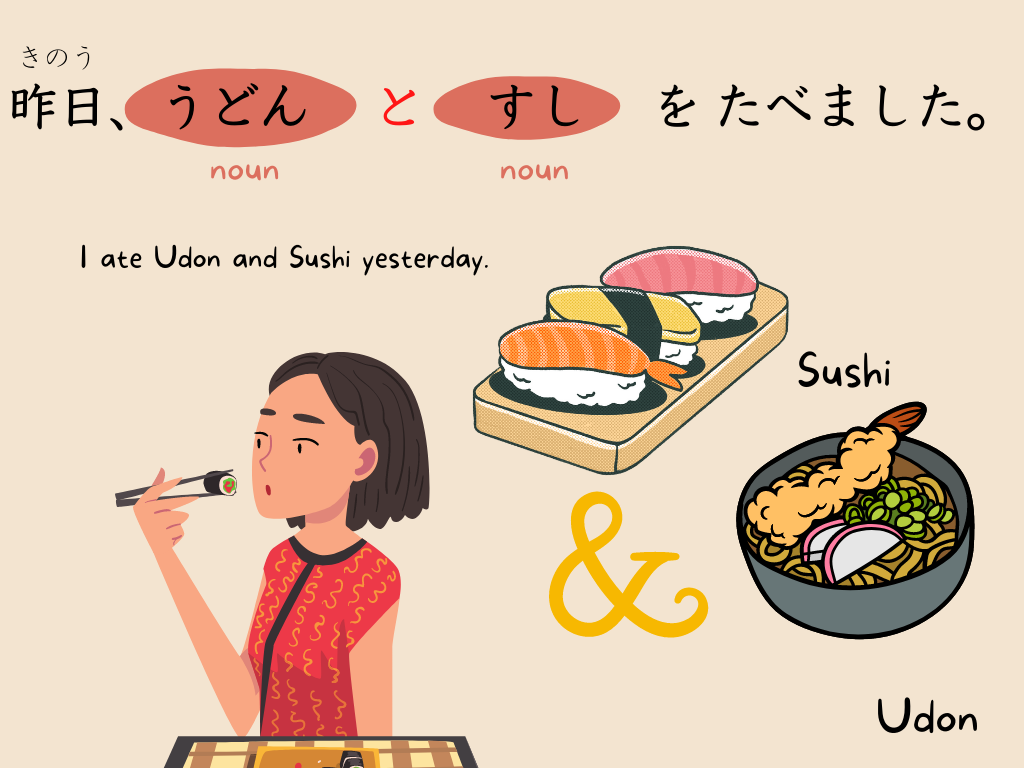
It is used when you want to say everything you ate yesterday. In other words, in this example, the only food eaten yesterday was udon and sushi, and nothing else of the same kind was eaten.
“と(to)” can connects only nouns, not connects with any sentences or adjective…etc. This is a mistake often made by beginners. An example of the mistake is shown below.
e.g.1 あさごはんを {✕たべますと / 〇たべて}、学校(がっこう)へいきます。
e.g.2 今日(きょう)は {✕ あついと / 〇あつくて}、天気(てんき) がです。
Person + と(to)
: Who to action with
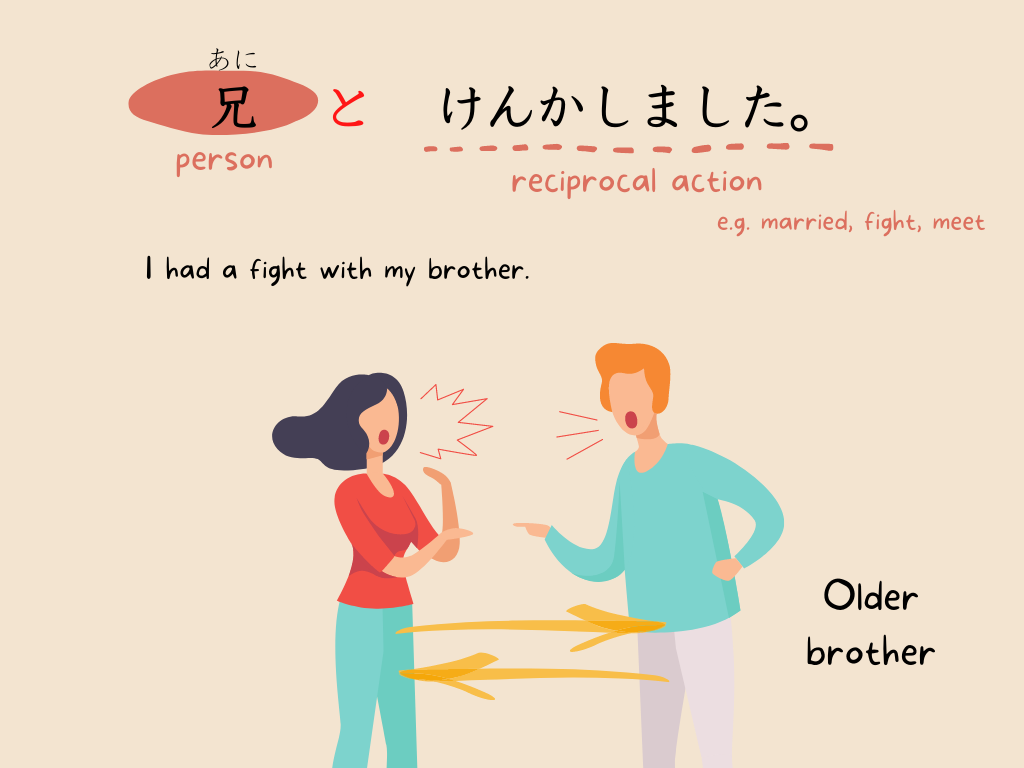
It is used to talk about reciprocal actions, i.e., things that cannot be done alone. This includes quarrels, marriages, and so on. It is also used when doing something together.
e.g.1 ともだち と 映画(えいが)を 見(み)ました。
Noun+と(to)+ちがいます / おなじです / にています
: Object of identity
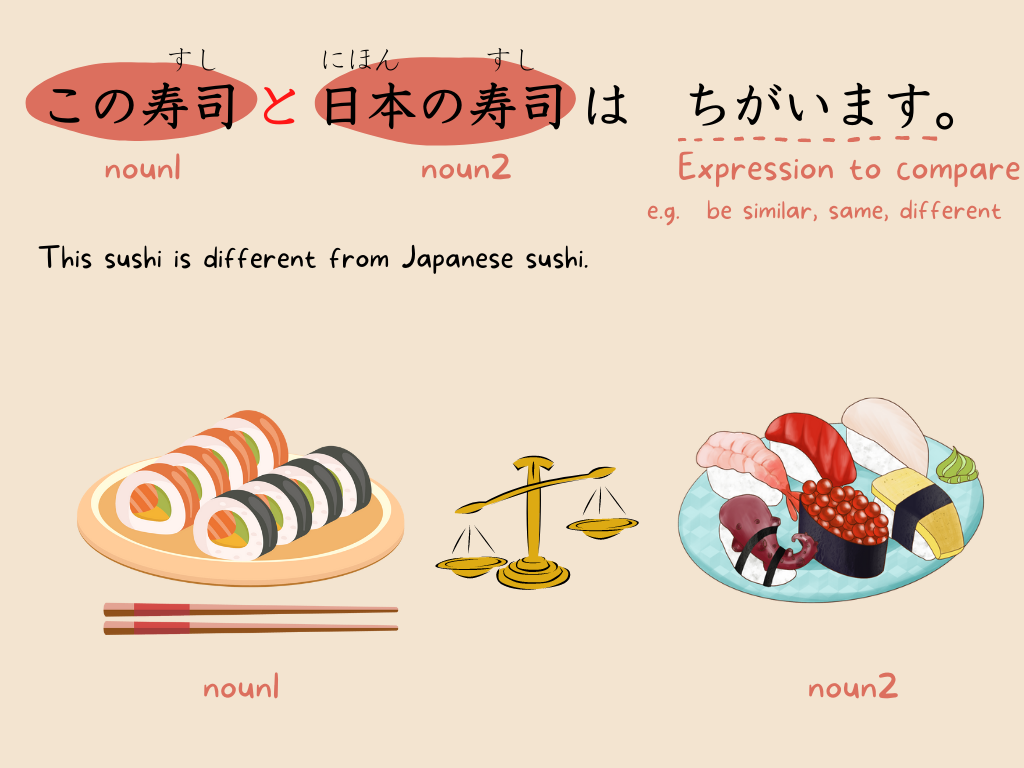
Use “と(to)” when you compare something and speak of it as the same, different, or similar.
e.g.1 おかあさんと私は 似(に)ています。
e.g.2 私の誕生日(たんじょうび) と 夫(おっと)の誕生日(たんじょうび) は 同(おな)じです。
*似(に)ています : be similar to
*誕生日(たんじょうび) : birthday
普通形 (Plain form)* +と(to)
: once; when <conditions>

The sentence before the word “と(to)” is conditional. If this condition is satisfied, the latter sentence is necessarily satisfied.
The first sentence of “と(to)” uses the present tense.The second half of the sentence cannot be used for a request or a statement of intent.
e.g.1 春になると、{〇さくら が さきます / ✕ ピクニックしましょう} 。
e.g.2 くつ を ぬがない と、入(はい)ることが できません。
We can also use in sentences that call attention to the other party, as in e.g.2.
Vる(dictionary form) + と(to)
: (condition) when *occurring in succession
Used when something happens immediately following the action preceding the word “と(to).” It is also used to talk about daily habits, etc.
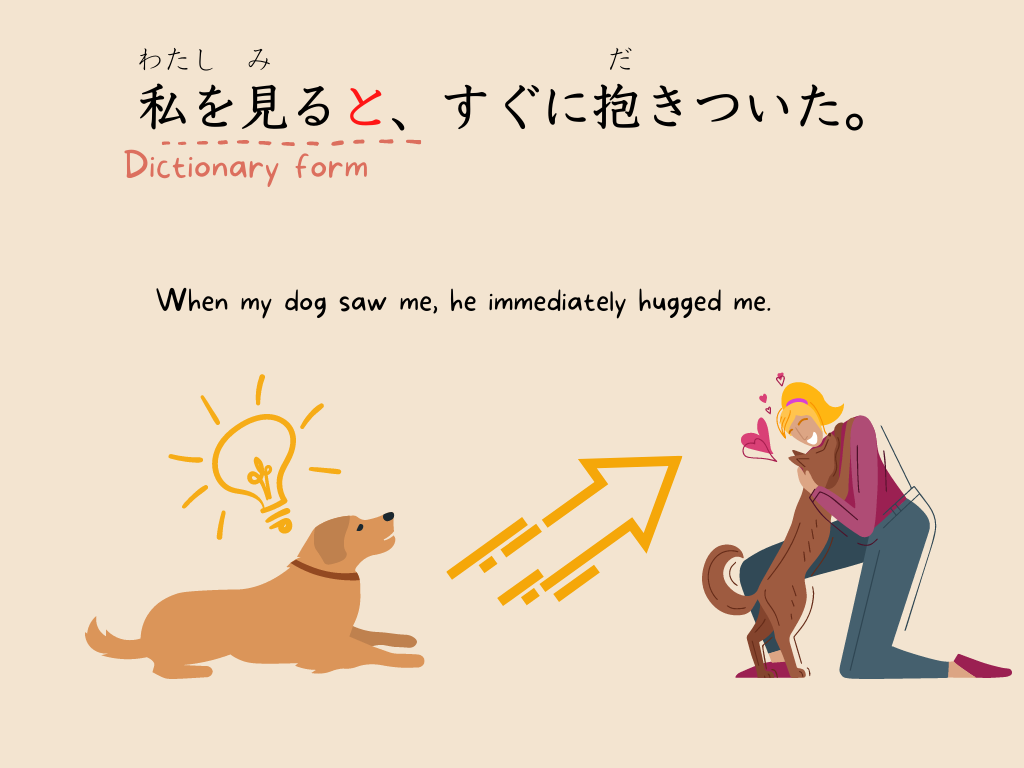
e.g. 朝(あさ)、起(お)きると、すぐにシャワーを浴(あ)びます。
普通形(Plain form) + と
: Quatation
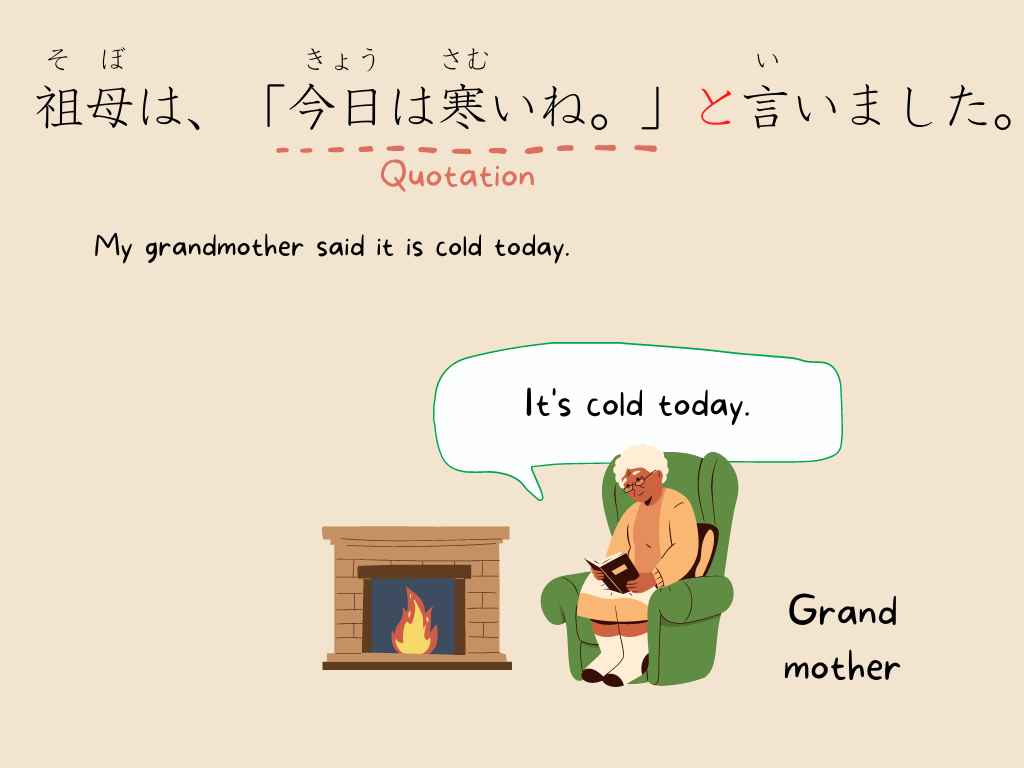
You can add “と(to)” after a direct or indirect quotation. In Japanese, quotations use 「」(kagi kakko).
Commonly used are “~と言(い)います” and “~と思(おも)います”.
e.g.1 富士山(ふじさん) は 本当に きれいだ と 思(おも)います。
e.g.2 英語(えいご) で おはよう は 「Good morning」と言います。
Must item for Japanese grammar
As described above, the same “と(to)” has several meanings and functions that need to be sorted out after learning. In such cases, a very useful tool is a Japanese sentence pattern dictionary. Using it, you can easily organize the connections, meanings, and usages and use them correctly.








